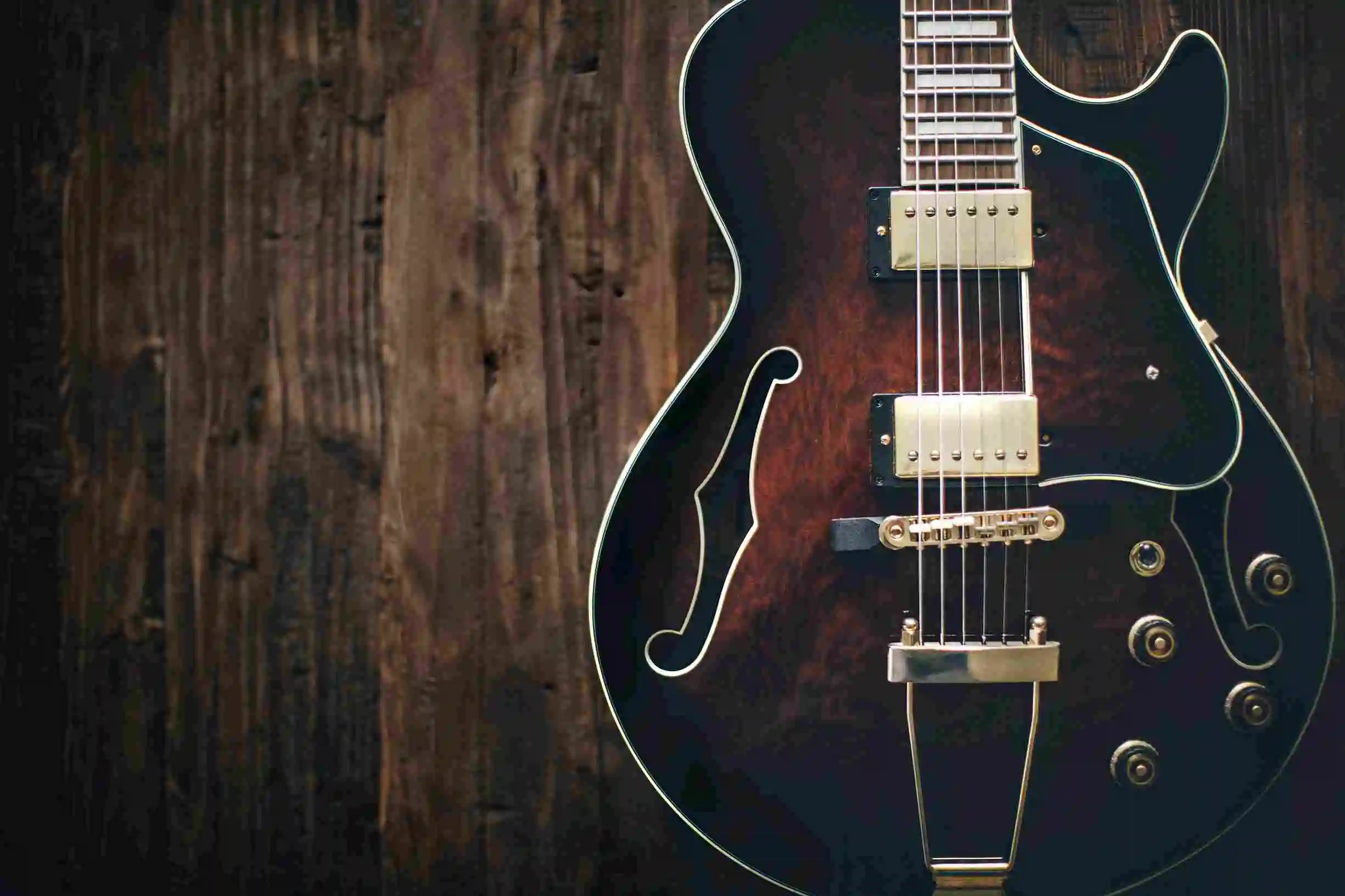The dreadnought guitar, with its distinctive body shape and powerful sound, has been a cornerstone of acoustic music for over a century.
Named after the British Royal Navy’s HMS Dreadnought battleship for its large size and robust build, this guitar type has carved out a significant place in the history of music.
This article explores the dreadnought guitar’s origins, design, sound characteristics, and the unique appeal that makes it a favorite among musicians of all genres.

Contents
🎶Whats A Dreadnought Guitar?
A dreadnought guitar is a type of acoustic guitar known for its large body size and powerful sound projection. Originating in the early 20th century, it was designed by C.F. Martin & Company.
The dreadnought’s distinctive shape features a wider waist and broader shoulders, allowing for a deeper, more resonant bass response compared to smaller-bodied guitars.
This design results in a loud, bold tone that has made the dreadnought a favorite among guitarists across various music genres, particularly in folk, country, and rock.
Its versatility and robust sound make it suitable for both rhythm and lead play, appealing to players of all skill levels. The dreadnought guitar’s popularity is also due to its adaptability in solo performances and group settings, where its strong projection can stand out or blend harmoniously with other instruments.
🎶The History of the Dreadnought Guitar
The dreadnought guitar traces its origins back to 1916 when C.F. Martin & Company first introduced this design. The guitar was revolutionary, offering a larger body size and louder volume than the parlor guitars popular at the time.
This new design quickly found favor among folk and blues musicians, who appreciated its robust sound that could fill a room without amplification. Over the decades, the dreadnought guitar became synonymous with acoustic music, played by legendary figures who helped cement its status in musical history.
🎶Design and Characteristics
The dreadnought guitar is known for its distinctive shape, characterized by a wider waist and a larger body compared to other acoustic guitars.
This design contributes to its powerful sound projection and deep bass response, making it an ideal choice for vocal accompaniment and solo performances alike.

The most common materials used in dreadnought guitars include spruce for the top and rosewood or mahogany for the back and sides, each adding unique tonal qualities to the instrument.
The scale length and fretboard are also crucial in defining the dreadnought’s playability. A longer scale length can increase string tension, leading to a brighter tone and more pronounced articulation.
These aspects, combined with the guitar’s construction, play a significant role in its overall sound and feel.
🎶Sound and Musicality
The signature sound of a dreadnought guitar is both bold and nuanced, capable of producing a wide range of tones from deep, resonant basses to clear, ringing highs.
Its volume and sustain make it a versatile instrument suited to various musical styles, from folk and country to rock and blues.
The dreadnought’s adaptability is further enhanced by its responsiveness to different playing techniques, whether a gentle fingerpicking style or aggressive strumming.
🎶Variations and Brands
Over the years, many guitar manufacturers have introduced their versions of the dreadnought, each with unique features and tonal qualities.
Iconic models like the Martin D-28, Gibson J-45, and Taylor 210 have become benchmarks of quality, sought after by both amateur and professional musicians.
When choosing a dreadnought guitar, considerations such as the player’s skill level, preferred music style, and budget should guide the decision-making process.
🎶Maintenance and Care
Maintaining a dreadnought guitar is essential for preserving its sound quality and longevity. Proper humidity and temperature control are critical, as wood is susceptible to changes in environmental conditions.

Regular cleaning, string changing, and addressing common issues like fret buzz or action problems will ensure that the guitar remains in top playing condition.
🎶Pro Tips
For those looking to further enhance their dreadnought guitar experience, selecting the right accessories and exploring various musical inspirations are valuable steps.
Listening to recordings from different artists and genres can provide new ideas and techniques to try out. Additionally, when amplifying a dreadnought for live performances, choosing the right equipment can make a significant difference in sound quality.
You may also read: What is a hardtail guitar?
🎶frequently asked question (FAQs)
The dreadnought guitar’s unique body shape and size contribute to its powerful sound projection and deep bass response, setting it apart from other acoustic guitars.
Their robust sound, versatility across musical genres, and ease of playability make dreadnought guitars a favored choice for musicians at all skill levels.
Yes, the dreadnought guitar’s wide tonal range and dynamic sound make it suitable for a variety of musical styles, from folk and country to rock and blues.
Prices can vary widely, from affordable models suitable for beginners to high-end, custom-made instruments for professional use.
Regular maintenance, including controlling humidity and temperature, cleaning, and string changing, is key to preserving your guitar’s sound and condition.
Conclusion:
The dreadnought guitar’s unique appeal lies in its rich history, distinctive design, and versatile sound. Whether used for rhythm or lead playing, in intimate settings or large venues, the dreadnought continues to be a fundamental instrument in the musician’s toolkit.
By understanding its characteristics and maintenance needs, players can enjoy the full range of expressive possibilities this iconic guitar offers.
